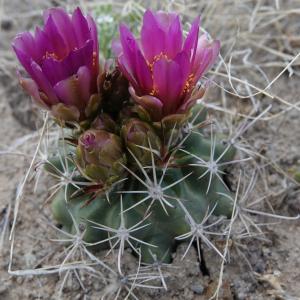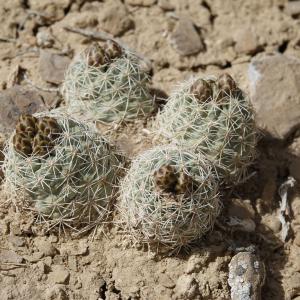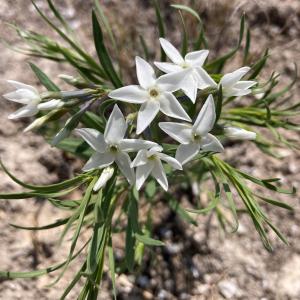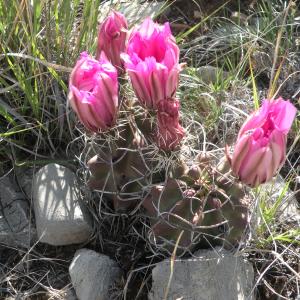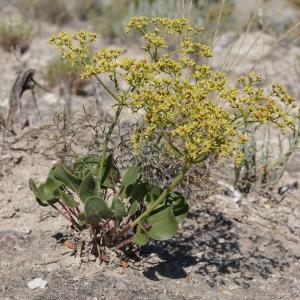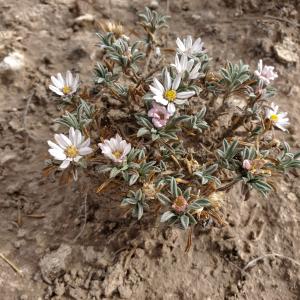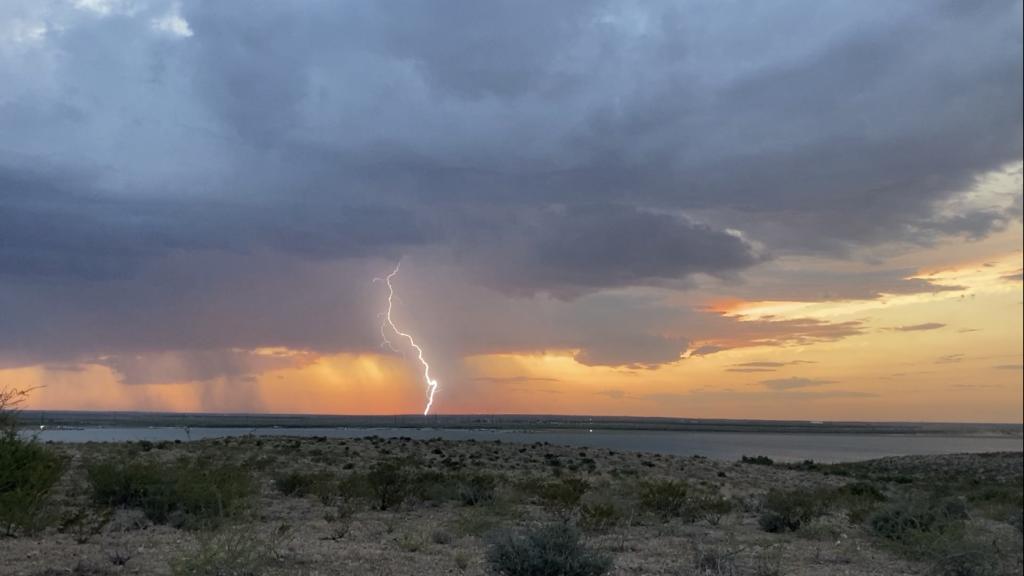By Vida Svahnström, Elisabeth Vulpas, Hailey Loya, July 2023
A few miles down a gravelly New Mexico oil and gas road, a lone, white Chevy Silverado is carefully making its way. But, what’s this!? It’s not an oil and gas truck, it is the rare plants crew on their way to monitor some rare plants!
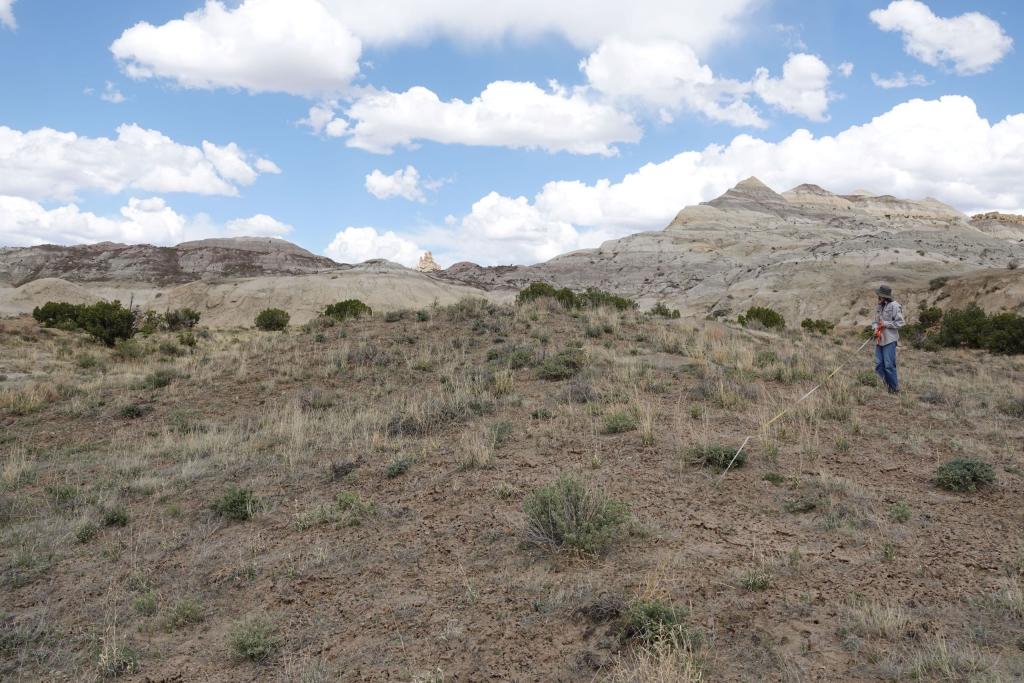
Every field season, starting in mid-April, the New Mexico rare plants crew revisits established plots for nine rare plant species throughout the state. All of the plots are located on Bureau of Land Management (BLM) land which serve multiple land uses. This means that the plant populations we study may be adjacent to oil and gas development or recreational off-highway-vehicle trails. Monitoring—in this context—allows us to determine the effects of these varied land uses on rare plant populations.
The crew begins the season in Farmington, New Mexico, with species Aztec gilia (Aliciella formosa), Clover’s fishhook cactus (Sclerocactus cloverae), and Mesa Verde cactus (Sclerocactus mesae-verdae). The crew then visits Carlsbad, New Mexico, to monitor Tharp’s bluestar (Amsonia tharpii), Allred’s flax (Linum allredii), Kuenzler’s cactus (Echinocereus fendleri var. kuenzleri), and gypsum wild buckwheat (Eriogonum gypsophilum). In Taos, New Mexico, the crew monitors Ripley’s milkvetch (Astragalus ripleyii), and finishes the season with gypsum Townsend’s aster (Townsendia gypsophila) near San Ysidro, New Mexico.

